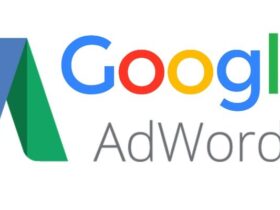In many methods, natural search rankings are the lifeblood of the online commercial enterprise world. As search engine optimization experts realize all too nicely, Google is famously quiet about what goes into their search rating algorithms, which they constantly replace. When a new update is released, seek fans are brief to make assumptions about how to tweak their SEO strategies to thrill the all-powerful Google bots.
Occasionally, specialists behind the scenes at Google drop large guidelines about the indications of a replacement – “prioritize this, dismiss that.” However, irrespective of what the brass at Google thinks or does, there are a handful of search engine marketing duties you need to listen to. Here are the seven massive ones.

1. Optimizing image alt textual content
Image alt text has long been a precious factor in search engine optimization. Over the past few years, there have been growing talks about using machine mastering to recognize what a photo is and what it’s all about, which has changed into the number one function of photograph alt text.
So does this suggest that including alt text is a waste of time?
No. Not.
Regardless of the more recent, AI-fueled processes for picture reputation, you aren’t going to lose whatever via including good photo alt texts on your internet site. Keep in mind that device getting to know is a fairly new concept. While photo alt textual content might be obsolete in the next 5 to 10 years (maybe faster), optimizing your pics in the “old-fashioned manner” is a superb way to play it securely.
Content “authority” has been an ambiguous issue in SEO since the beginning. Google wants to give users maximum credibility and authoritative content based on search queries. Following the August 2018 Medic Core update, it becomes more or less clear that companies in the Your Money Your Life industries had to prioritize the E-A-T (Expertise, Authority, Trustworthiness) in their content material. However, in this current March update, quite a bit of the information surrounding this concept had been redacted (this is a hypothesis, of course). People had been left with the question, “Should we nevertheless be aware of constructing authority with our content material? If so, how a whole lot?”
This comes down to the fundamentals of making insightful, reliable content material. Make it smooth for the average user to consume, reference credible statistics/data to aid your claims, offer clean takeaways, etc. These commonplace techniques of making authoritative content material were true because of the beginning of the internet. “Some pages have plenty of phrases that say nothing, and word count does not indicate nice. With this in thought, Google will not always rank your content based on word count on its own. Short-form content has the identical ranking capability as long shape. But does this suggest you must make the most effective goal of creating shorter content material?
No.
The most vital component of creating content is giving the best viable data based on positive queries and, more importantly, personal motives. Maybe you can do that in 500 words; perhaps it takes five 000. Ultimately, it’s as much as you to use your high-quality judgment as a site owner. According to the current content material studies case look at with the aid of Backlinko, “Long-shape content gets a median of seventy-seven. 2% extra hyperlinks than quick articles. Therefore, long-shape content material seems to be perfect for one-way link acquisition.” This leads to improved natural search outcomes, too.
Remember that content portions with better phrase counts have greater potential to goal more applicable queries and get to search purpose. So, that being said, you are regularly better off developing longer content. Eliminate the fluff and ensure you answer pressing questions with meaningful and credible perceptions.











